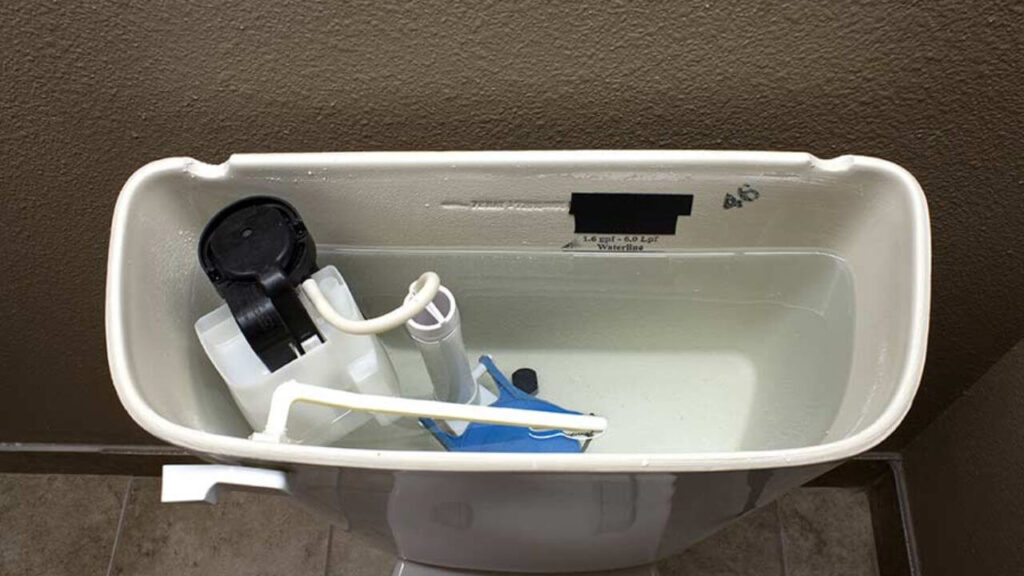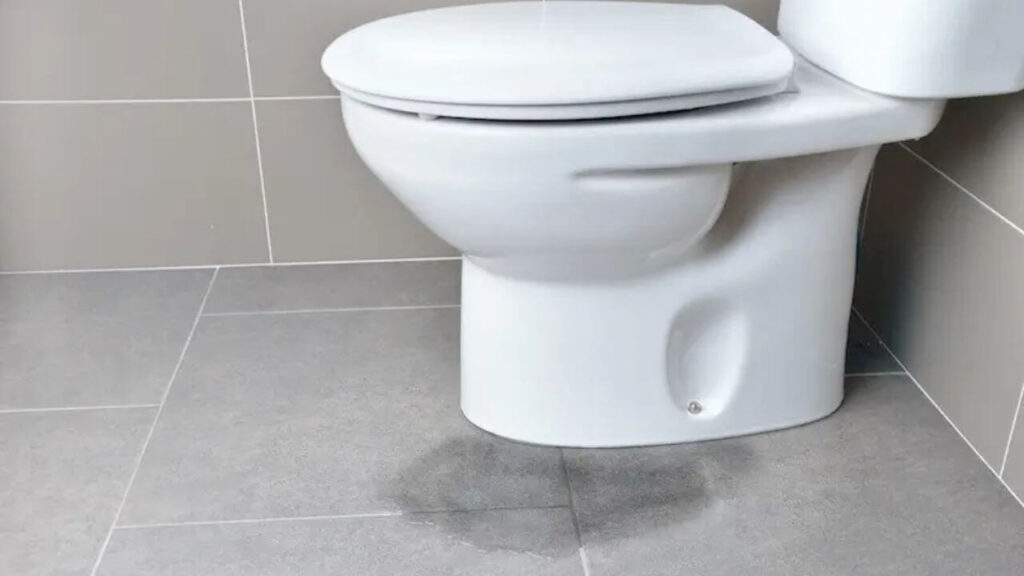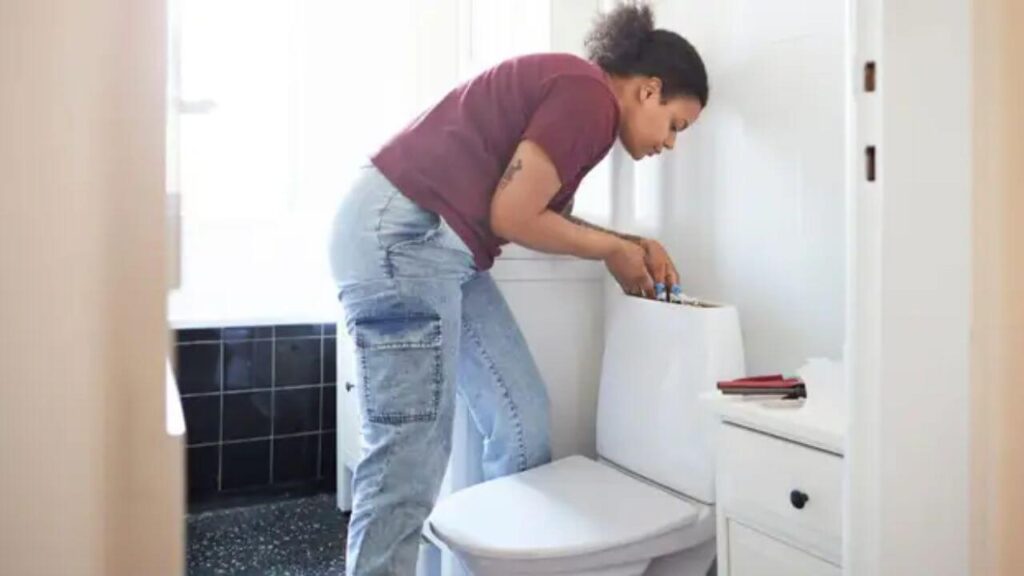Have you ever had the misfortune of dealing with an overflowing toilet? Standing in deepening water and watching as it slowly rolls over your bathroom tile can be terrifying.
It’s one of those moments when time stands still, and all you can do is scramble to fix what’s wrong.
For me, that moment came during a leap year day some years ago when I woke up early to find my little bathroom completely flooded with toilet water.
After frantically running around trying to mop it up and turn off the shutoff valve, I eventually figured out what was causing this mess: a faulty flapper.
It turns out that something as small as a lousy rubber flapper at the bottom of your toilet tank can cause majorly disruptive plumbing problems – like an overflowing toilet.
To deal with such an intense situation today, we’ll focus solely on how a lousy flapper can cause too much water to flow from toilets, creating an unpleasant mess around our homes.
Can Flapper Cause Toilet Overflow?

It’s a common question many homeowners ask me: can a toilet overflow due to a problem with the flapper? In general, the answer is yes. Yeah! It’s true.
When the flapper is not seated correctly or becomes worn, it may not provide an adequate seal when water passes through. This leads to too much water in the bowl and eventually overflowing from the side.
But usually, another underlying issue causes the flapper to malfunction. For example, the most common cause of an overflowing toilet involves a blocked or damaged trap, which is the curved pipe beneath the tank.
This blockage prevents water from draining out, allowing too much into the bowl and causing it to overflow.
A malfunctioning flapper can also be to blame, as it may need to seal completely against its seat to keep water out.
If you believe your flapper may be causing an overflow issue in your home’s toilets, try inspecting for debris or damage before replacing this part.
Also Read:
How Much Water Does a Bad Flapper Waste?
I know many people know that a flapper is an integral part of a toilet, as it’s the mechanism that lets water flow from the tank into the bowl.
But when it needs to be fixed, it can allow gallons of water to pass through without your knowledge continuously.
Depending on the size of the flapper and the amount of time it takes for you to repair it, an old or broken flapper can easily waste at least 25 gallons per day. You may notice an increase in your water bill as a result too.
Fortunately, preventing this from occurring is relatively easy—all you need to do is monitor your toilet and check for any signs of leakages or improper flushing.
However, with extra care, even something as small as a lousy flapper can have substantial financial and environmental consequences.
Good To read:
How Much Water to Flush a Toilet
How Much Does It Cost to Flush a Toilet
What Causes Toilet Overflows?

Have you ever experienced the dreaded toilet overflow? I know it’s not a pleasant experience. But do you know many different factors can cause it?
In addition, it’s essential to know what is causing your overflow so that you can take the appropriate steps to fix it. So let’s dive into the leading causes of toilet overflow and what you should do if it occurs.
1) Clogged Drains
A clogged drain is one of the most common causes of a toilet overflow. This could be due to too much toilet paper being flushed down at once or objects such as toys, wipes, or feminine products being flushed down the toilet.
If this is the case, you will need to remove the clog from your drain for your toilet to function again. You can try using a plunger or auger.
However, if these methods don’t work, you may need to call a professional plumber for help.
2) Leaky Pipes/Valves
Another common cause of your toilet overflowing could be leaky pipes or valves. Inspect your pipes and valves regularly to ensure they function correctly and that no leaks have developed over time.
If there are any signs of damage, such as discoloration or wet spots on the walls around your pipes, this could indicate an issue with one of them that should be addressed immediately.
A plumber may also be needed in this scenario since they will know how to repair any damaged pipes or valves properly.
3) Low Water Pressure
A third possible cause of your toilet overflowing could be the low water pressure in your area.
Low water pressure can make it difficult for water to travel through all of the necessary parts of your plumbing system, which may lead to overflows and other issues with your toilets and sinks.
To determine if this is causing your problem, contact your local water company and ask them about their current water pressure levels for you to compare them against what they should be at for everything to function correctly.
Also, take a look at some of the most common causes of an overflowing toilet:
- Malfunctioning Flapper – The flapper is a valve at the bottom of your toilet tank that seals off the water when you flush. If this valve is damaged or not functioning correctly, it can cause your toilet to overflow.
- Tree Roots – If you have large trees growing near your home’s sewer lines, their roots may be able to penetrate through and cause a blockage in the pipes leading to an overflowing toilet.
- Septic Tank Backup – When too much waste accumulates in your septic tank over time, it can eventually back up into your plumbing system and cause an overflowing toilet. This is especially common if you’re on a private septic system with no regular maintenance schedule.
Good To Read:
How to sanitize after toilet overflows
What Happens When a Toilet Flapper Is Bad?
The toilet flapper may look like a small, insignificant piece of the puzzle. But if it’s not doing its job correctly, it can cause significant problems for your home and your wallet.
So, what happens when a toilet flapper is terrible? Let’s find out.
1) Excessive Water Usage
One of the most common signs of a bad flapper is excessive water usage. So when you flush your toilet, the flapper should open and close quickly to allow enough water into the bowl.
If it isn’t closing correctly, water will continuously trickle out of the tank and into the bowl—causing your bill to go up and up!
To see if this is happening in your home, check if there are any visible signs of leaks around or under your toilet.
2) Clogs & Blockages
Another common sign that you have a bad flapper is clogs and blockages in your plumbing system.
Too much water flowing from the tank into the bowl can cause debris and waste to get stuck in pipes or overflow back into the tank—which could lead to an even bigger mess down the line!
This issue can be easily avoided by replacing an old flapper with a new one as soon as possible.
3) Noisy Flushing
If you hear loud noises every time you flush your toilet, it might be time for a new flapper.
Over time, rubber parts wear out and no longer fit securely onto their connectors—causing them to become loose and create loud noises during operation.
Replacing these parts with new ones should fix any noise issues you might be encountering.
How Do I Know If My Flapper Valve Is Bad?

Now you may wonder how I know if the flapper valve is a bad. Well, as I said, if your flapper valve is worn out or damaged, it can cause severe problems with your toilet, including overflowing and leaking.
So how do you know if your flapper valve needs to be replaced? Relax! It’s pretty easy as sound. So let’s take a look.
Signs of a Bad Flapper Valve
The most common signs of a bad flapper valve are slow-filling toilets and leaks from the tank into the bowl. Several issues can cause a slow-filling toilet.
But one of the most common is a faulty or worn-out flapper valve. When water enters the tank, it should fill up quickly and stop when it reaches the top.
If your toilet takes longer than usual to fill up, this could be an indication that something is wrong with your flapper valve.
Another sign of a bad flapper valve is leaking from the tank into the bowl.
This can happen when water seeps through cracks in the rubber seal around the flush handle or through gaps between the tank and the bowl caused by wear and tear.
If you notice any drips or puddles around your toilet bowl, it’s time to check your flapper valve for damage or wear and tear.
Testing Your Flapper Valve
If you suspect something might be wrong with your flapper valve, there are a few simple tests you can do to find out for sure.
First, flush your toilet and listen for any strange noises from inside the tank after it has finished refilling itself with water.
If you hear anything unusual coming from inside, this could indicate something is wrong with your flapper valve.
Second, try running some cold water down into the drain pipe. This will create pressure on both sides of the seal around your flush handle, allowing any air bubbles to escape and indicating how well sealed it is against water leakage.
Finally, press down gently on both sides of your flush handle. If one side feels more challenging than usual or does not seem as responsive as expected.
This could indicate damage or wear and tear on either side of the seal around your flush handle.
How Often Should a Toilet Flapper Be Replaced?
Toilet flappers are essential to your toilet’s plumbing and should be replaced regularly to ensure your toilet is functioning correctly.
How often should a toilet flapper be replaced? The answer will depend on the type of flapper you have installed, as some last longer than others.
Generally speaking, it’s recommended that you check your toilet flapper at least every 4-5 months and replace it if necessary.
During regular inspections, take note of any corrosion around the valve or cracks in the flapper hoop—these can indicate the need for replacement.
Paying attention to these signs can help save you time and money in costly repairs down the road!
How Much Does It Cost To Replace a Toilet Flapper?
Replacing a toilet flapper can be inconvenient but not so pricey that you must stick with a leaky one! Generally speaking, part of the cost comes in buying the right-sized flapper.
Depending on the make and model of your toilet and the quality of the parts needed, you’ll typically spend between $10 to $20 for a new flapper. That includes all materials required to replace and install it.
As often is the case when doing any repair job yourself, though, there could be additional costs if you need tools or supplies you still need to get.
For example, if your original flapper was installed back when dinosaurs roamed and are consequently obsolete, you may need some extra tools to take it out!
Costs should still stay reasonable, though; this is an inexpensive fix, even with tools.
Bottom Line
In the end, I must say if your flapper is damaged or old, it could be the reason your toilet keeps overflowing.
In most cases, replacing the flapper should do the trick and stop your toilet from becoming a never-ending fountain.
If you need more time to repair this yourself, hire a professional to do it for you. Have you ever had an issue with a flapper causing your toilet to overflow? Let me know in the comments.
